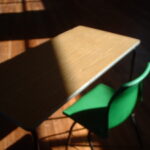A person’s speech and language is controlled by the left side or hemisphere of the brain, therefore the left side is considered to be the dominant side of the brain. The right side or hemisphere handles spatial processing and visual interpretations. A small percentage of left handed people however may have their speech functions located on the right hemisphere or side of the brain. Left-handed people may have to undergo special testing in order to determine which hemisphere or side their speech is controlled by.
Many neurologists and neurosurgeons believe that not only the left side or hemisphere plays a key part of speech but other portions of the brain also play big part in our ability to speak. Having a disturbance in language is called aphasia and there are several types of language disturbances depending on the part of brain that is affected and the what that part of the brain controls pertaining to language and the production of speech.
In the left side of the frontal lobe is a part called Broca’s, and it is next to the area that controls facial muscle, jaw, tongue and throat function movement. If the area that controls movement is corrupted in any fashion, a person will experience difficulty in producing the actual sounds of speech. The reason they will have difficulty is because a person needs to move the facial muscles and tongue in order to form words. If someone has Broca’s aphasia they can still understand spoken lauguage and read language, but they have a hard time speaking and writing due to movement problems. A person with this disorder is also considered to be a non-fluent aphasia person. Typically they will talk using short phrases that make sense but they have extreme difficulty in moving their mouths and getting the sounds to come out. They also often omit words in order to shorten what they have to say. People who suffer from non-fluent aphasia understand the speech but because the can’t get the words they want to say out they often get irritated and frustrated. People who suffer from Broca’s also have right-sided paralysis or weakness that extends to their extremities.
There is another region called the Wernicke’s area which is located in the left temporal lobe and corruption of this area causes an individual to make meaningless sounds. Basically they can make do speech sounds, but they do not make any sense. In other words, damage to the the side portion of the brain may cause fluent aphasia. In most cases this kind of damage occurs in the left side, although it the damage can be caused from the right side also. People that have this left side damage or temporal lobe damage often talk in long sentences that basically are meaningless, they often add unwarranted words, and can even make up words. Therefore it is often extremely difficult to understand what a person with this disturbance is trying to tell you. The people that are affected by this disorder are usually unaware that they have it and usually have no weakness in their movements because their problem is not near that area of the brain.
There are many other types of aphasia or speech and language disturbances and each form results from damage to different areas of the brain. Therefore it is hard for many neuroscientists to actually explain in words or pinpoint what area that truly conducts speech.
References for this article include: www.neuroskills.com/brain.shtml
kidshealth.org/kid/htbw/brain.html
faculty.washington.edu/chudler/split.html
memory.ucsf.edu/Education/Topics/language.html



